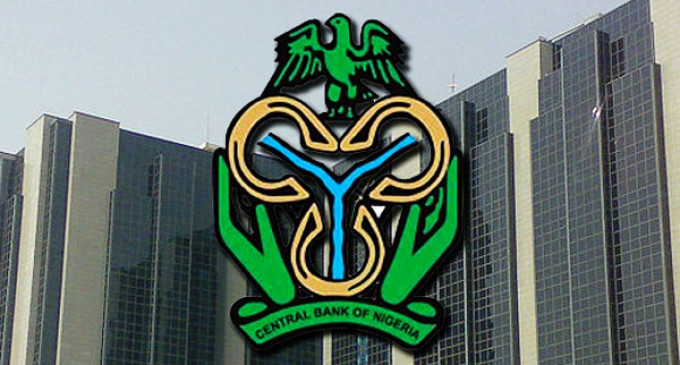With the Central Bank of Nigeria (CBN) retaining 65 per cent minimum Loan-to-Deposit Ratio (LDR), among other policies to boost lending, credit to private sector between January and May 2022 added N3.01 trillion reaching an all-time high of over 60 years, THISDAY analysis of the CBN Money and Credit Statistics has shown.
The CBN data revealed that credit to the private sector reached N38.1trillion in May 2022, an increase of 8.5 per cent or N3.01 trillion from N35.18 trillion reported in January 2022.
With the latest figure, it means that credit to the private sector in Year-on-Year performance has added 18.9 per cent or N6.08 trillion from N32.12 trillion reported by the CBN on May 2021.
According to the CBN, credit to the private sector was N35.99trillion in February and hits N36.47trillion in March 2022. It crossed the N37trillion mark in April to N37.68trillion.
The CBN had revealed that credit to private sector reached N35.73trillion in 2021 and reported N26.65trillion credit to private sector in 2019.
THISDAY can report that credit to private sector in 2019 when the LDR policy was introduced, gained N3.75trillion or 16.33 per cent to close at N26.69trillion from N22.95trillion it opened in 2019.
In 2020, credit to private sector added N3.5trillion or 13.12 per cent to close December 2020 at N30.15trillion from N26.65trillion recorded in January 2020.
However, in the full year of 2021, credit to private sector rose by N5.08trillion or 16.57 per cent close 2021 at N35.38 trillion from N30.65 trillion reported by the CBN in January 2021.
The CBN numbers showed that Money Supply (M2) grew by 21.83 per cent to N48.56 trillion in May 2022 when compared to N39.69 trillion reported May 2021.
The huge surge in money supply reflects increasing demand for cash by members of the public caused by continued rise in prices of goods and services, evidenced by the three consecutive months rise in the inflation rate at 17.71 per cent in May this year.
However, the surge in money supply is driven by increased borrowing by the federal government and lending to the private sector propelled by the various intervention funds of the CBN.
Further analysis also showed that major components of M2, namely Narrow Money (M1) and Quasi Money, recorded sharp increases in May 2022.
M1 comprises Currency Outside Banks (CoB), and Demand Deposits (Current Account deposits of bank customers).
Quasi Money comprises Savings Deposits, Fixed Deposits and Foreign Currency Deposits of bank customers.
According to the CBN’s data, M1, rose by 26.77 per cent or N4.35 trillion to N20.61 trillion in May 2022 from N16.26 trillion reported ending May 2021.
Also contributing to the huge growth in money supply ending May 2022, is the sharp increase in credit to the government during the period.
The CBN data showed that credit to the government rose sharply by 45.55 per cent or N5.72trillion to N18.27 trillion as of ending May 2022 from N12.55 trillion in the corresponding period of 2021.
Commenting, analysts believe the N38.2 trillion credit to private sector as at May, is still within the range of credit growth in 2021.
“An average monthly growth rate of 1.66per cent since December, 2021, is an indication of a moderate credit extension to the private sector of the economy, in consonance with low absorptive capacity of the economy itself, and as possibly programmed by CBN, given mirage of problems bedeviling the Nigerian economy.
“An economy with low productivity and total reliance on import must guide its credit expansion, in order not to put too much pressure on a faulty exchange rate management. Further credit expansion in the midst of poor monetary and fiscal coordination, could spell doom for the economy. This is one of the reasons our economy is not doing well, ”said CEO, Wyoming Capital & Partners, Mr. Tajudeen Olayinka.
On his part, analyst at PAC Holdings, Mr. Wole Adeyeye attributed the growth to 65 per cent LDR policy of the CBN, stressing that many banks complied with the directive on the minimum requirement.
He added that, “the intervention programs by the CBN in various sectors of the economy drove the increase as borrowers took advantage of the low interest rate.
The minimum LDR of 65per cent and intervention programs by the CBN in various sectors have contributed to the strong economic growth witnessed in the past quarters.”
Also speaking, the Chief Operating Officer, InvestData Limited, Mr. Ambrose Omordion noted that post-covid-19 business activities contributed to N38.1 trillion credit to private sector as of May 2022.
He expressed that the recent increase in CBN’s Monetary Policy Rate (MPR) might disrupt credit to private sector going forward, stressing that cost of production tends to witness increase and impact on local economy.
However, some analysts expressed mixed reactions in their projections for money supply growth for the remaining months of the year especially in the face of election year spending and recent hike in the MPR by the CBN.
They told THISDAY that increased credit to the government is responsible for the sharp growth in money supply, which they noted is also a major driving force behind the upward inflationary trend.
Vice president, Highcap securities Limited, Mr. David Adnori said, “In general, an increase in the money supply drives inflation rather than the other way around. In our typical case, money supply growth far outstrips economic growth, which is a typical condition for stoking inflation.
“In terms of inflation, the majority of the inflationary pressure we are experiencing is supply-side driven, as a result of issues like insecurity, poor infrastructure, insufficient logistics, and cost push factors from the external environment, such as the Russian-Ukraine conflict. As a result, I would ascribe a higher percentage (about 65-70per cent) of the money supply growth to inflation. I believe the balance is due to a higher credit growth to the economy, notably to the government.”




